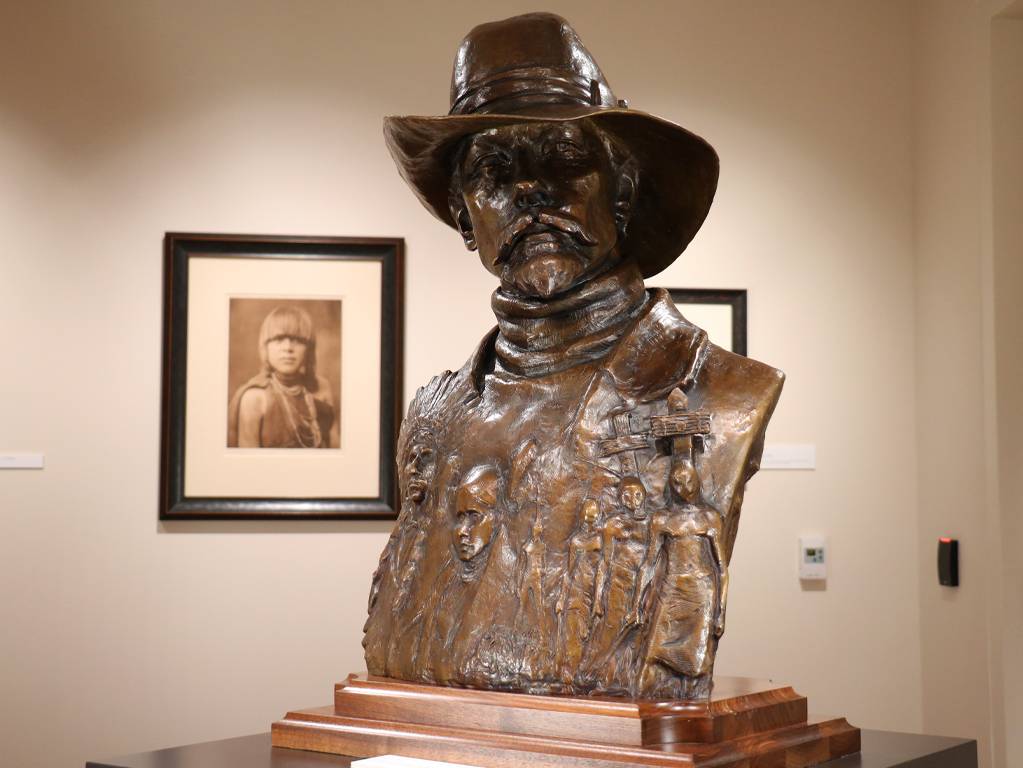


In 1906 Curtis received a grant from financier J.P. Morgan to record, through photography and the written word, all Native American tribes who retained some degree of their “primitive” lifestyle. Native Americans were almost wholly confined to reservations by this time, and they were subjected to federal programs that forced their assimilation to Western ways. Curtis felt passionately that their cultures should be chronicled before they disappeared altogether.
The North American Indian is one of the most ambitious photographic projects ever undertaken. Published from 1907 to 1930, it documents more than 100 peoples’ languages, stories, and songs, along with extensive illustration by Curtis’ photography. Curtis took some 40,000 photographs during these years, selecting 2,234 photographs to be included in the publication. Twenty bound volumes are paired with oversized portfolios, from which the framed prints in this exhibition were selected.
Initially, Curtis and his work enjoyed great success. By 1930, however, he had endured countless financial setbacks, his research had not received the scholarly recognition he craved, and Curtis himself was virtually forgotten. The North American Indian cost Curtis his marriage, his wealth, and his health.
The Wittliff Collections owns a complete set of The North American Indian.
- Facebook
- Twitter
- Instagram
- Youtube
Email List